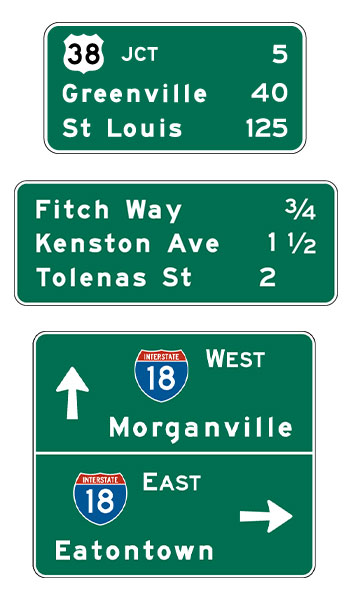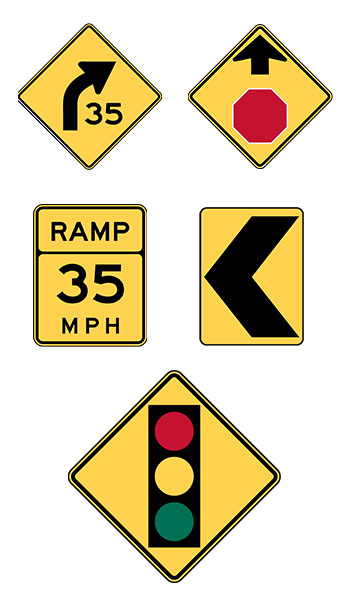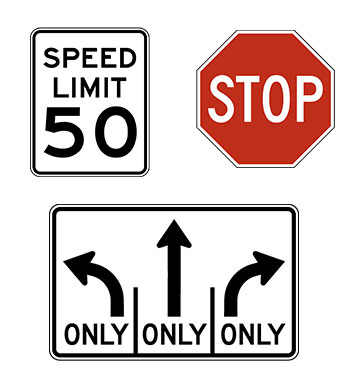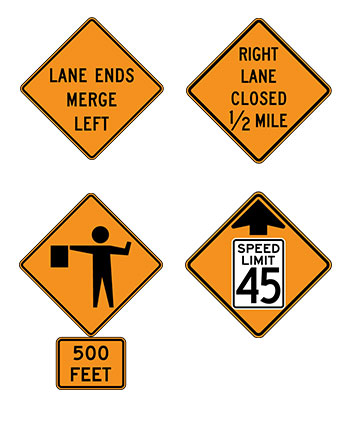Know Your Signs
Learn more! Consult the Manual on Uniform Traffic Control Devices (MUTCD).
Guide Signs
Guide signs generally are white lettering and border on a green background. Guide signs are essential to direct road users along streets and highways, to inform them of intersecting routes, to direct them to cities, towns, villages, or other important destinations, to identify nearby rivers and streams, parks, forests, and historical sites, and generally to give such information as will help them along their way in the most simple, direct manner possible.

Warning Signs
Warning signs are typically black on yellow. They call attention to unexpected conditions on or adjacent to a highway, street, or private roads open to public travel and to situations that might not be readily apparent to road users. Warning signs alert road users to conditions that might call for a reduction of speed or an action in the interest of safety and efficient traffic operations.

Regulatory Signs
Regulatory signs are black/white or red/white. Regulatory signs are used to inform road users of selected traffic laws or regulations and indicate the applicability of the legal requirements. The signs clearly indicate the requirements imposed by the regulations and are designed and installed to provide adequate visibility and legibility in order to obtain compliance.

Temporary Traffic Control Signs (Workzone/Construction Signs)
The primary function of temporary traffic control (TTC) signs is to provide for the reasonably safe and effective movement of road users through or around TTC zones while reasonably protecting road users, workers, responders to traffic incidents, and equipment. Of equal importance to the public traveling through the TTC zone, is the safety of workers performing the many varied tasks within the work space.

